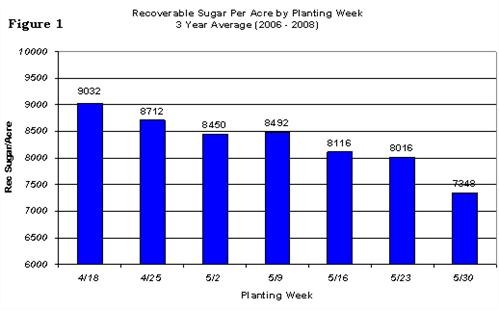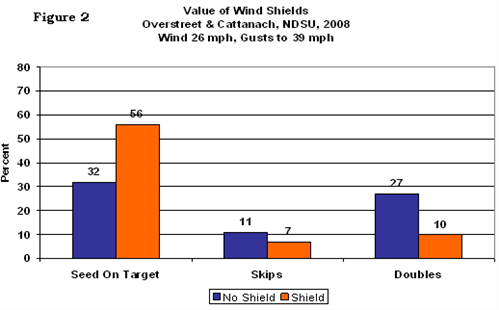519 - Wet Fall = Spring Challenges?
Wet fall conditions and above average snowfall have already created some production problems that growers will have to manage this spring. Significant amounts of snowfall the remainder of the winter and early spring rains could add to the challenges. Choosing production strategies that enable early planting and excellent stand establishment may be more important than ever in 2009.
Planting Date
Planting beets early almost always results in greater recoverable sugar. Figure 1 shows recoverable sugar per acre versus planting date for the 3 year period 2006-2008. Planning ahead to deal with the challenges of getting the crop in early will certainly increase revenue per acre for 2009.

Potential Challenges For Spring 2009
- Crop rotation / field selection?
- Soil testing fields?
- Fertilizer application?
- Seedbed preparation?
- Timely planting?
- Increased disease risk?
What are the strategies growers might consider to manage the crop if faced with these problems?
Crop Rotation / Field Selection
- Alter the crop rotation without increasing disease risk.
- Consider going to a shorter rotation on a one time basis if you can then plant earlier.
- Be sure to match variety "Disease Package" to any field changes.
Soil Testing / Fertilizer Application
- Forego soil testing if it delays planting - use historical data from Agvise.
- Soil sample after planting, then fertilize
- Use starter at planting and don't worry about broadcast P fertilizer
- Don't apply more than 75 lbs/A actual nitrogen before planting, stand loss is likely to occur if higher rates are applied.
- If applying more than 75 lbs/A nitrogen consider increasing seeding rate to compensate for possible stand loss.
- Apply spring nitrogen as a side dress application after planting - it works well.
Seedbed Preparation / Planting
- Tune up your planter and attend a test stand clinic.
- Plant XBEET in fields with a tough stand establishment history.
- Consider planting 24 hours a day as an option if planting is delayed.
- Consider stale seedbed planting if soil conditions are right.
- Use residue managers/trash wheels in high wheat residue or corn trash following reduced fall tillage.
- Take steps to minimize insecticide granule contact with seed, especially if seedbeds are somewhat wet and furrows remain open.
- If GPS guidance is available plant dry areas in a field, return to plant wet areas later.
Wind Shields Valuable Many growers have used wind shields for years to keep insecticide granules in place. Don't be tempted to remove them if switching to Poncho Beta® in 2009. Figure 2 shows the value of maintaining wind protection when traveling with the wind using small seed. Wind shields improved plant uniformity, harvestability and revenue per acre.

